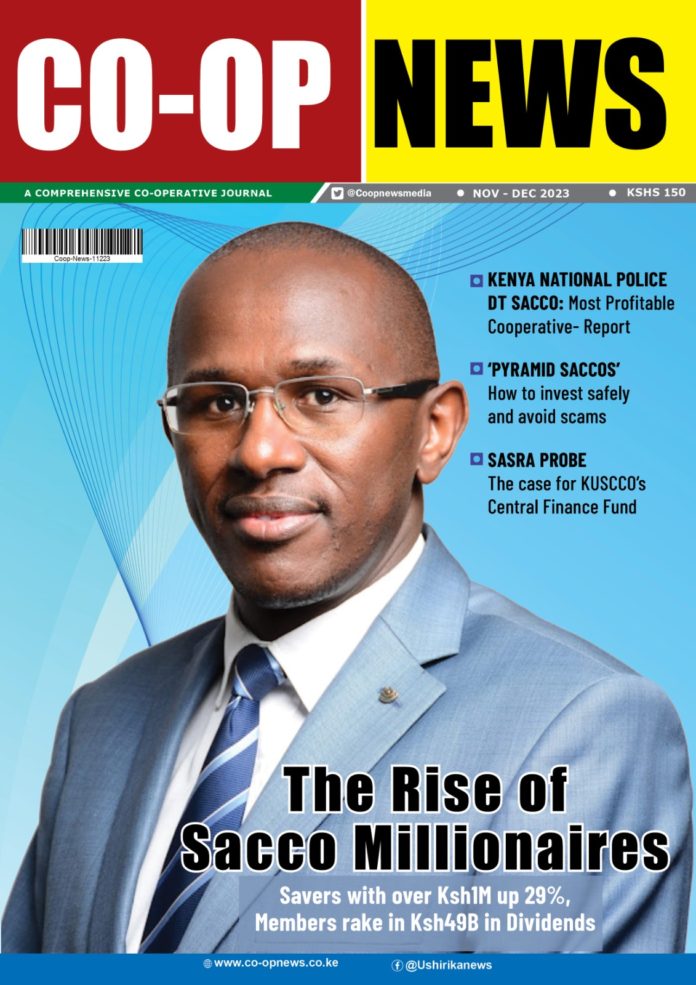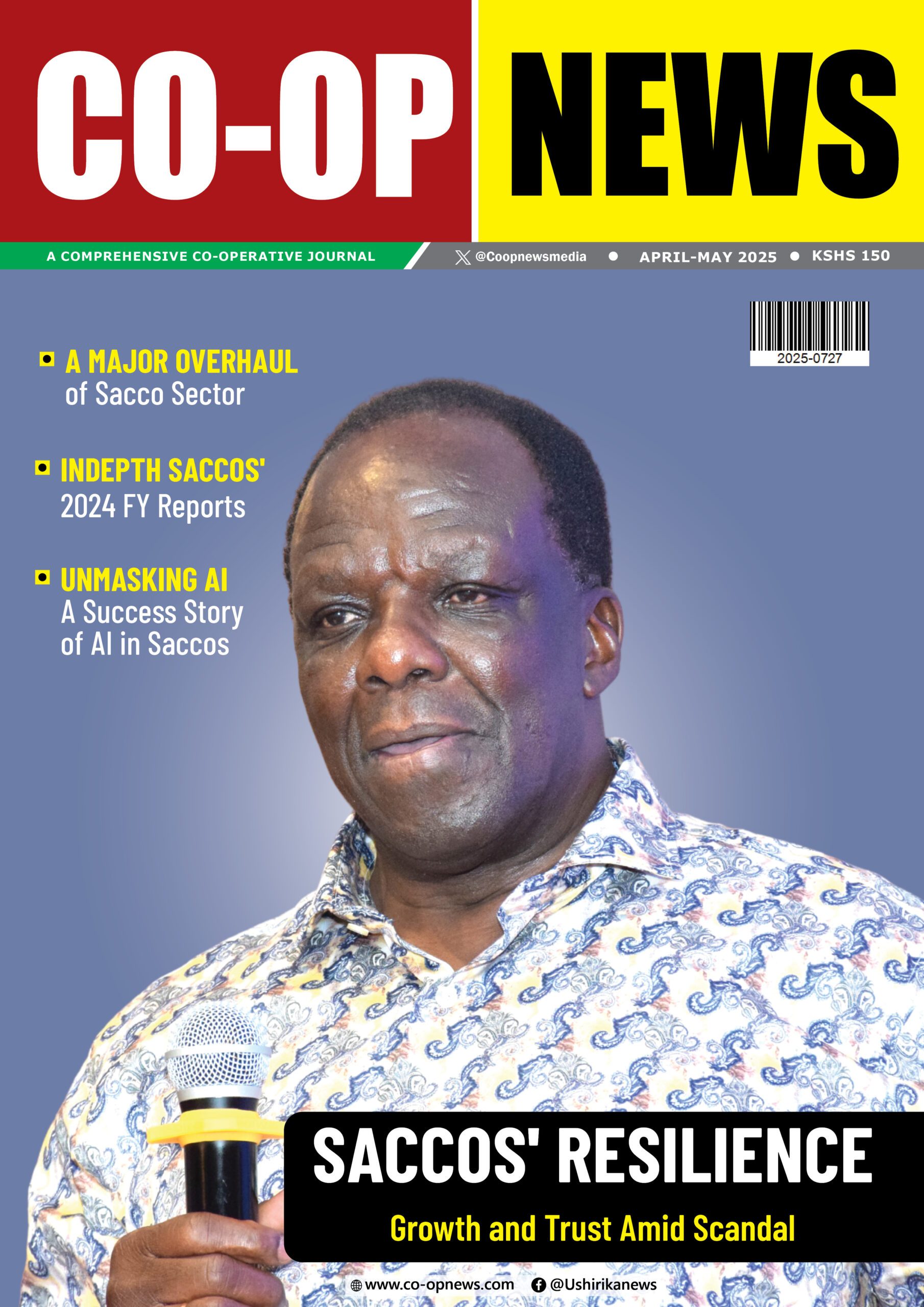The Rise of Sacco Millionaires
Accounts with over KSH1MILLION grow fastest on affordable lending, higher returns- SASRA DATA. Here is How Saccos are Changing Livelihoods. Breaking the Poverty Barrier with Saccos: The Safest Way to Build Your Wealth.
It is crystal clear that Savings and Credit Co-operative Societies (Saccos) are the gateway to success for many Kenyans. The latest data shows that these entities are empowering communities from the grassroots level, promoting the dignity of individuals, and expanding opportunities for all, especially women, youth, and the vulnerable members of society.
The Sacco Supervision Annual Report 2022 highlights that Saccos are playing a significant role in enabling people to work together and establish sustainable enterprises that generate long-term employment and community prosperity. Moreover, Saccos are facilitating the acquisition of decent homes and other properties.
According to the sectoral lending report by the Sacco Societies Regulatory Authority (SASRA), Saccos have significantly financed eight main economic sectors, which include land and housing, agriculture, trade, education, human health, manufacturing and servicing industries, finance, investment and insurance, and consumption and social services sectors.
SASRA notes that the credit advanced by regulated Saccos is earmarked to finance micro-economic subsectors or industries within these macro-economic sectors.
At the top is the land and housing sector, which received the lion’s share of credit facilities disbursed by Saccos, with 33.24% in 2022, an increase from 26.97% reported in 2021.
“The finding is consistent with the traditional Saccos’ lending model, which has for years been focused on empowering the membership towards the acquisition of land, which accounted for 18.59% of the total credit advanced in 2022,” SASRA notes.
Additionally, residential house construction accounted for 14.65% of the total credit advanced last year, indicating that Saccos’ funding towards land and housing has increased proportionally to the credit advanced from a similar period in 2021.
The Sacco lending model towards the land and housing sectors is based on their unique incremental mortgage lending model. The Sacco regulator notes that the incremental mortgage lending model was premised in short-term credit facilities mostly tenured between three and five years, which has proved successful within the Kenyan Sacco system. This is because it assists Saccos in managing their liquidity and cash flow cycles while mitigating the risks of defaults.
“The growth in the lending towards land and housing sector was also catapulted by the membership of eleven of the Saccos partnering with the Kenya Mortgage Refinance Company Ltd (KMRC) that provides long-term refinancing credit facilities to them for on-lending to housing initiatives,” SASRA states.
Saccos that have partnered with KMRC include Stima, Imarisha, Ukulima, Tower, Mwalimu, Unaitas, Harambee, Bingwa, Kenya Police, Safaricom and Imarika, all having a 7.5% stake in the state-backed firm, which has disbursed Ksh8.1 billion to nine banks and 11 Saccos, with the banks accounting for 80% of the funds. The largest amount of money Sacco borrowed for refinancing is Ksh500 million.
KMRC increased the size of mortgage loans to commercial banks and Saccos to Ksh 8 million in Nairobi and neighbouring counties of Kiambu, Machakos, and Kajiado Counties from the previous Ksh 4 million and also doubled the cash it disburses for purchasing homes in the rest of Kenya to Ksh6 million from Ksh3 million.
The government’s agenda on affordable housing anchored in the Bottom-Up Economic Transformation Agenda Framework (BeTA) has put more impetus on Saccos to prioritize affordable housing-aligned credit products.
The success of Saccos in enabling affordable housing projects highlights their unique business model that is people–centred and their existence as jointly owned and democratically controlled enterprises, run by and for members to realize their everyday economic, social, and cultural needs and aspirations. They thrive in many important sectors of the economy – agriculture, energy, finance, housing, health, and information technology.
Saccos’ funding towards the education sector also recorded an increase of 21.98% in 2022, maintaining its place as the second-highest beneficiary of the subsector’s credit facilities. SASRA noted that the rise in financing education, especially payment of school fees, is consistent with the socio-economic objectives of regulated SACCOs as co-operative entities, and the trend is unlikely to change in the long term.
The agricultural sector received 13.76% of the credit facilities despite the existence of 42 agriculture-based Saccos, dropping from 17.47% advanced in 2021. “The reduced lending towards the agricultural sector was generally informed by the erratic weather patterns dominated by long spells of drought, which was witnessed in 2022 and thereby calling for cautionary lending by regulated Saccos to control loan defaults,” SASRA observed.
The agricultural sector has been credit lending forte for Saccos in the past. The bulk of agricultural loans in 2022 financed crop farming at 8.43%.
According to SASRA, other economic sectors that benefited from Saccos’ credit facilities last year included the trade sector (10.85%), the finance, investment, and insurance sectors (5.07%), the manufacturing and servicing sectors (2.18%) and the human health sector (1.82%). Consumption and social services borrowing increased to 11.09% in 2022 compared to 8.36% in 2021.
“Credit facilities advanced to members of regulated Saccos towards the payment of utilities continue to constitute the highest proportion of all the credit towards consumption and social services and stood at 7.28% in 2022 compared to 5.96% reported in 2021,” SASRA notes.
Members often turn to their respective Saccos for financial support during times of need, which is consistent with the social objectives of co-operative enterprises.
An Overseas Co-operative Development Council (OCDC) research titled What Difference Do Co-operatives Make states that Sacco members rely less on family, friends and relatives during emergencies.
It notes that co-operative members rely 23 per cent on their family, friends and relatives during emergencies compared to 41 per cent for non-members. Saccos promote economic freedom by empowering poor and low-income members to build a more stable economic future with loans for microenterprise and agriculture.
They also enable members to save money and apply for low-interest rates loans. Members have the opportunity to benefit from simple loan terms and conditions. Compared to traditional banks, Saccos offer members better interest rates if members need a loan during challenging times.
Despite the hard economic times experienced in the country, from severe droughts and high inflation to rising interest rates, the Sacco industry continued to play its rightful role in the economy through the mobilization of savings for national development and the provision of credit facilities to many household economies.
“Coming immediately against the backdrop of the impacts of the COVID-19 pandemic, these economic shocks slowed down the growth trajectory of regulated Saccos despite their overall resilience with their total assets to the nominal GDP remaining the same at about to 6.66% in 2022 as it was in 2021,” the SASRA report states.
The sub-sector also provided reliable employment opportunities to 11,188 Kenyans (50.61% female and 49.39% male).
The statistics highlight Saccos critical role in the country’s economic development and catalyst of the government’s economic transformation agenda and attainment of sustainable development goals.
“SASRA has put in place new strategies to safeguard these gains while exploring new developmental initiatives to deepen further the role of regulated Saccos in national development.”
Co-operative Societies also help people manage debt through financial literacy and supporting access to capital for small businesses and farmers since they are businesses driven by values of fairness, equality, and social justice, not profit.
The regulator noted that the quality of the loan book of regulated SACCOs pointed to their stability. In 2022, the Sacco sub-sector loan book constituted 71.97% of the total assets, up from 70.95% in 2021. Positively, the mean non-performing loans (NPL) ratio for the regulated Saccos decreased to 8.34% in 2022 from 8.99% reported in 2021.
Despite the hard economic environment experienced in 2022, most Saccos could ensure that the loans and other credit advances issued to their members were being repaid as scheduled in the contractual terms.
Co-operative Societies also help people manage debt through financial literacy and supporting access to capital for small businesses and farmers since they are businesses driven by values of fairness, equality, and social justice, not profit.
According to 2021 OCDC research in Kenya, members attributed their higher income and improved economic well-being to co-operative membership:
- 97% said membership improved their household’s financial situation.
- 63% cited access to loans, savings, shares, and commissions as critical to income diversification and for support during financial hardship.
- 91% cited improved market access as a key benefit of co-operative membership.
Although Saccos’ lending grew, the subsector reported a reduced non-performing loans ratio at 8.40% in 2022 compared to 13.80% for Commercial banks and 31.78% for Microfinance Banks.
SASRA analysis shows that Saccos are preferred loaning institutions by savers due to their competitive rates social collateral (guarantee) model as loans and advances outweighed deposits. Regulated Saccos gross loans accounted for 15.60% of the gross loans issued in 2022 by all the deposit-taking financial institutions in Kenya.
Saccos gross loans grew by 11.76% in 2022 to reach Ksh680.35 Billion from Ksh 608.75 Billion in 2021, with the DT-Saccos segment registering the highest growth rate at 12.24% in 2022 from 10.00% a year earlier. The growth in gross loans, total assets, gross loans, and deposits portfolios indicate a strong and resilient sub-sector playing a significant role in members’ empowerment and livelihoods empowerment.





